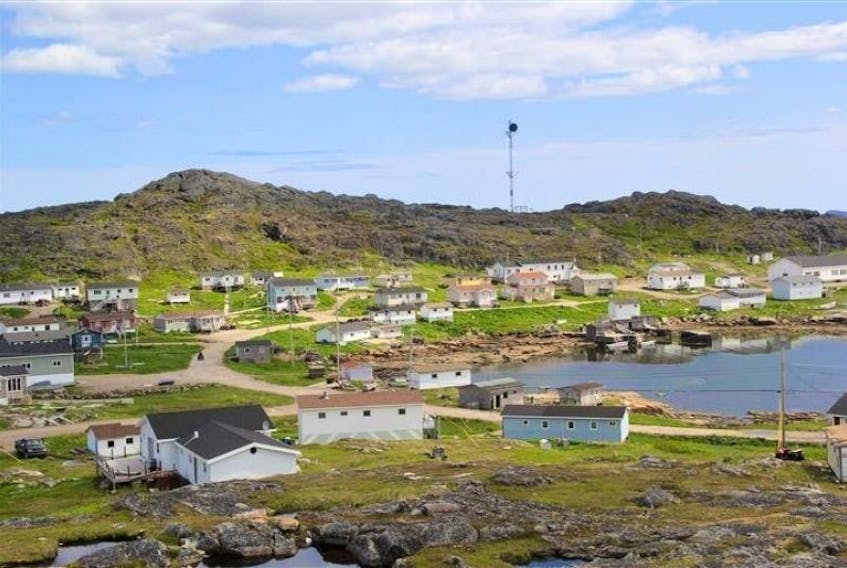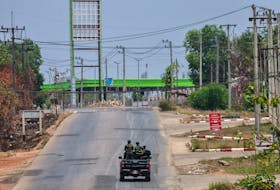HAPPY VALLEY-GOOSE BAY, N.L. — Three communities on the south coast of Labrador will get some academic help with energy sustainability this summer.
The NunatuKavut Community Council (NCC) has partnered with Nicholas Mercer, a PhD candidate from the University of Waterloo’s Institute for Sustainable Energy (WISE), as well as researchers from Dalhousie University and Queen’s University, to assess options for the communities of Black Tickle, Norman’s Bay and Saint Lewis.
The work, scheduled to start last week, is aided by a $25,000 grant from Social Sciences and Humanities Research Council of Canada, funds designated to help organizations such as NCC address urgent needs. The project also received funding from the Conservation Corps of Newfoundland and Labrador to hire assistants from the communities.
Most remote settlements in Canada and certainly in Labrador, still rely on diesel fuel to generate electricity, a reality all levels of government, including NCC, have identified as an impediment to energy security. Black Tickle, for example, has lost its fuel supplier altogether, and shortages due to supply challenges occur regularly. Last fall, Nain ran out of gas forcing the town to ration.
Planning process
“We start from the assumption that diesel generation is bad,” Mercer said. “Diesel generation causes a great deal of economic, social and environmental challenges and generally people say renewable energy technologies are good.”
That being said, Mercer said care must be taken in the planning process.
“There’s a growing body of emerging literature that shows if you don’t involve communities meaningfully in the energy planning process, renewable energy projects can actually create community tensions of their own,” he said.
As examples, Mercer cited two of the main drivers of energy projects — job creation and community self-determination — noting creating a new job in renewables often displaces diesel plant workers resulting in a net loss. Also, he said, frequently the new systems end up being owned by outsiders, either from the private sector or higher levels of governments and end up being an imposition and eroding self-determination.
Mercer described the process the team will take this summer as being four-pronged.
First, the researchers will assess the key concerns of the communities by interviewing all voting age persons.
Next, they will outline all the potential supply-side solutions including wind, solar, wave, tidal etcetera, and assess social opinions about the various options.
Third, they will explore, with the stakeholders, consumer-side factors such as energy efficiency and space heating, again collecting information about preferences.
Finally, they assess the local priorities, such as job creation and community ownership.
Potential
Mercer said Labrador has the greatest potential for wind power of any jurisdiction in North America, as well as huge opportunities in wave, tidal and solar power, but that solutions may actually lie closer to home. He cited the recent Nunatsiavut Energy Security Plan as an example, saying it fascinated him.
“The key finding in the report actually was that the single biggest step you can take to improve energy security in the north is to improve heating in people’s homes,” he said.
“Many outsiders, be it the private sector or government, frequently promote renewable energy projects, be it wind or solar, but actually the greatest need in many Indigenous communities, especially in Nunatsiavut, but also in NunatuKavut is improved space heating. Something like 55 per cent of the homes in Nunatsiavut are inadequately heated, so renewable energy projects are not actually going to solve that, but something like better insulation or high-efficiency wood stoves will.”
Mercer continued, “Sustainable energy doesn’t always mean building big renewable energy projects, it can also just mean making modifications to your home, improving the types of lighting you use, improving the insulation, switching over to energy efficient appliances — the sky is the limit for what we hope to do to improve energy sustainability on the coast, but we’re really dedicated to taking the lead from the community, to identify their preferences and then to move on from there.
Mercer said they are going to be looking at some innovative ways to provide heat — everything from improved insulation in homes to establishing a community firewood service.
“None of these things are confirmed yet,” he said. “The first step is to get into the communities, assess what the communities’ preferences are, then once the community tells us what they prefer then we’ll go about doing the technical and economic model of that energy source.”
Current funding is specific to the assessment. Any projects that may be proposed at the end of the consultation process would require other sources of funding. Mercer said one potential source might be the $220 million earmarked by the federal government in February of this year specifically to help northern communities reduce their reliance on diesel.
“We are pleased to work together with the provinces and territories on these initiatives to promote cleaner, more reliable energy supply in rural and remote communities, reduce greenhouse gas emissions in Canada’s North and create new opportunities for social and economic development in these communities,” the minister said at the time.









